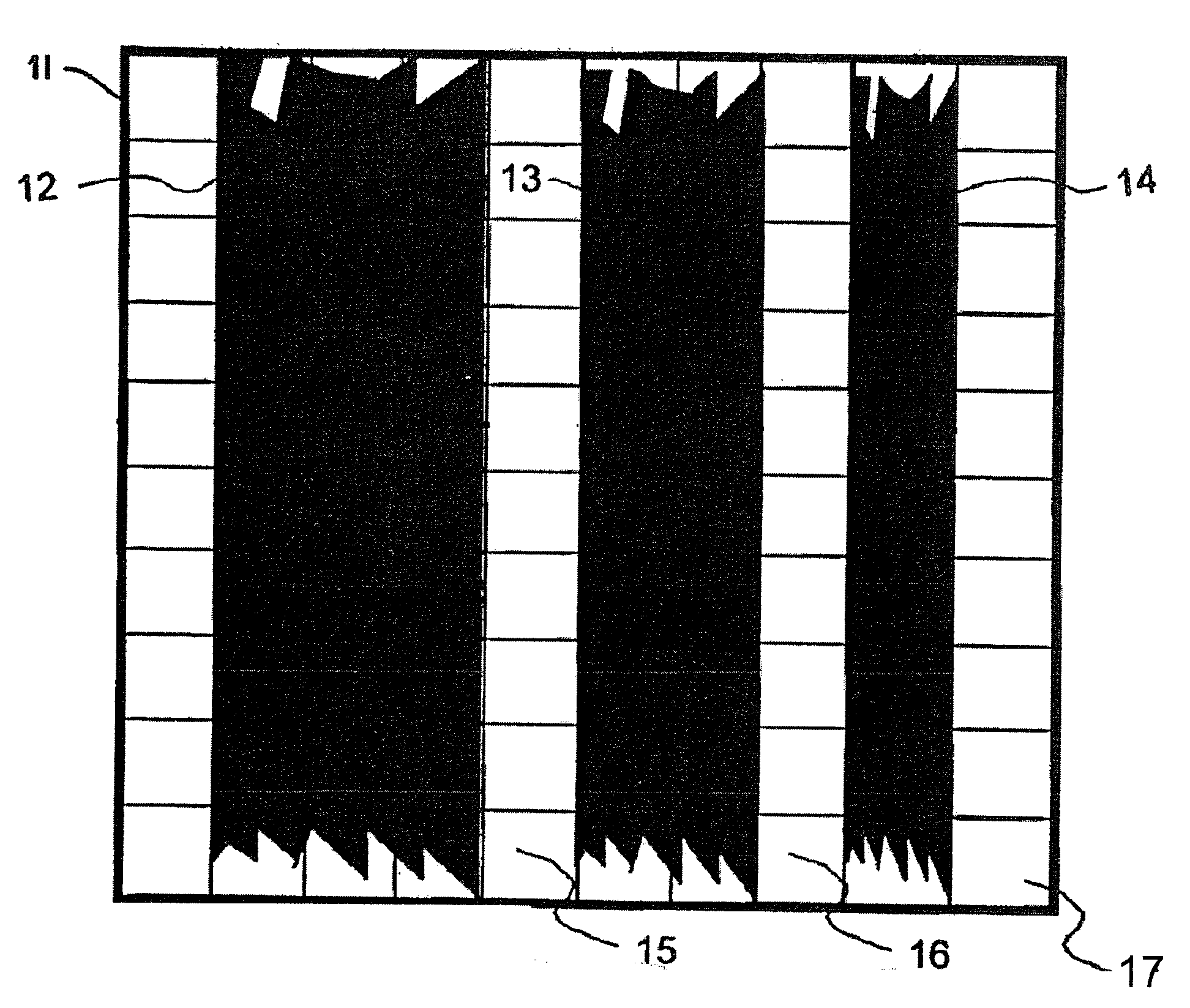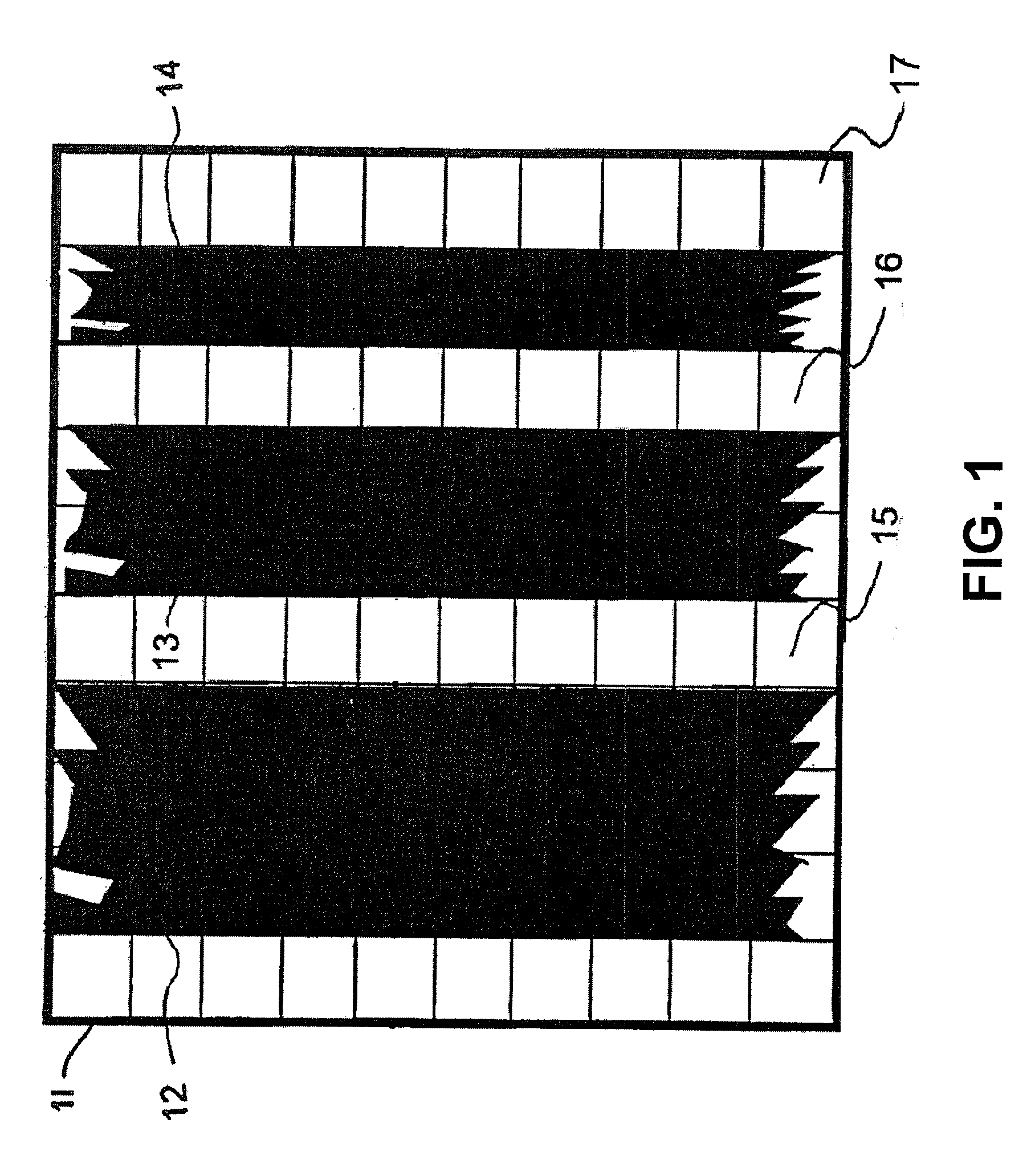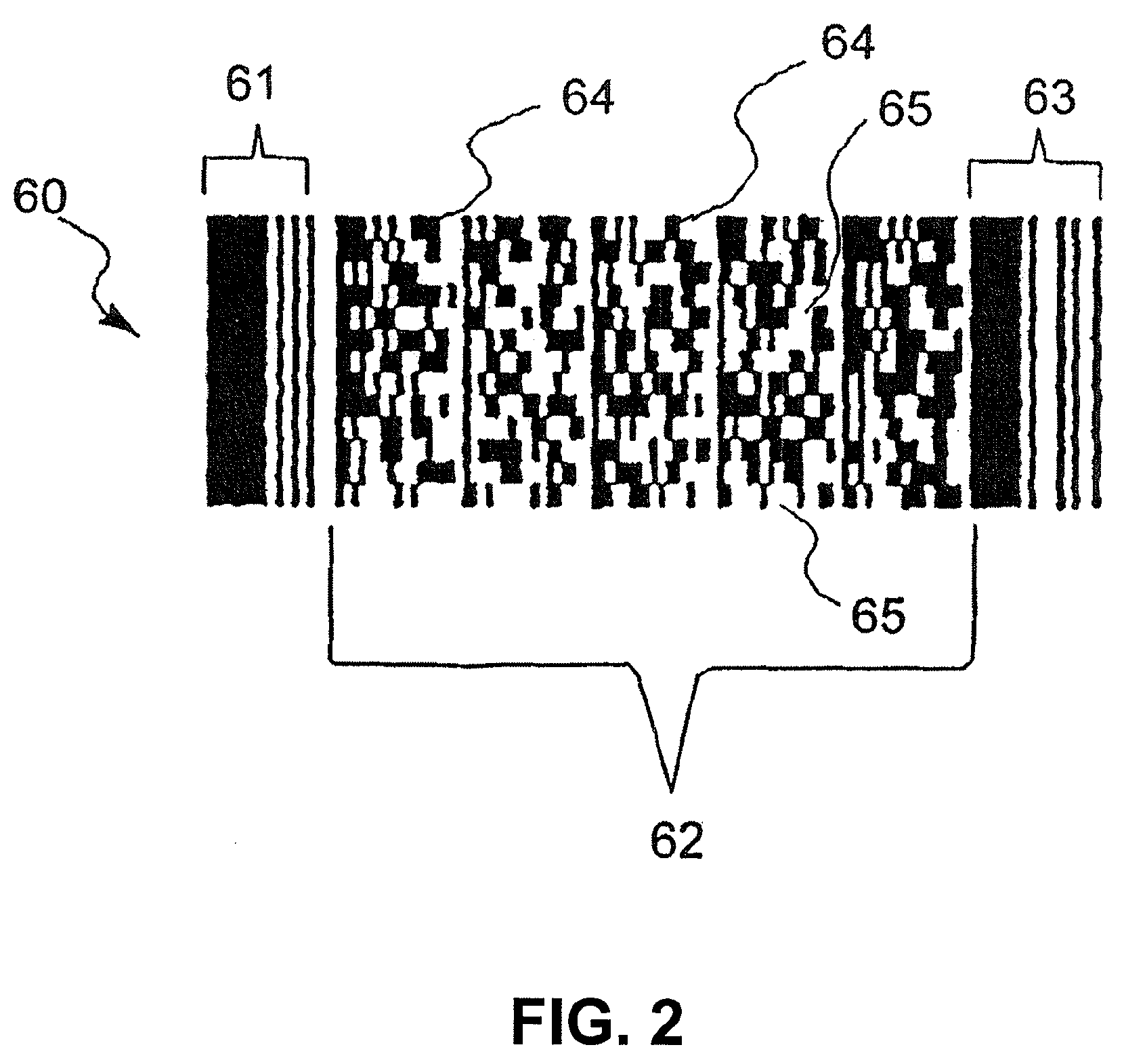Print enhancement of pixels to improve readability
a technology of print enhancement and pixels, applied in the field of printing, can solve the problems of small unintended voids between pixels, unintended voids, and unintended voids, and achieve the effects of improving the uniformity of printed areas, improving barcode print image quality, and preventing bleeding into unplanned areas
- Summary
- Abstract
- Description
- Claims
- Application Information
AI Technical Summary
Benefits of technology
Problems solved by technology
Method used
Image
Examples
Embodiment Construction
[0023]Referring now to the drawings in detail, and more particularly to FIG. 1, the reference character 11 represents an enlarged detail portion of a width modulated barcode. Barcode 11 contains bars 12, 13 and 14 and spaces 15, 16 and 17. Bar 12 is three pixels wide, bar 13 is two pixels wide, and bar 14 is one pixel wide. Bar 12 represents a unique number (i.e., three), bar 13 represents a unique number (i.e., two), and bar 14 represents a unique number (i.e., one). Spaces 15, 16 and 17 are one unit wide.
[0024]FIG. 2 is a drawing of a two dimensional (2-d) barcode 60. Barcode 60 includes: a start pattern 61, that informs a scanner (not shown) when to begin reading data; a data portion 62; and a stop pattern 63, that informs a scanner when to stop reading data. Data portion 62 comprises printed barcode data elements (rectangles) 64 and non printed barcode data elements (spaces) 65. The coded information represented by data portion 62 is contained in the relative positions of the pr...
PUM
 Login to View More
Login to View More Abstract
Description
Claims
Application Information
 Login to View More
Login to View More - R&D
- Intellectual Property
- Life Sciences
- Materials
- Tech Scout
- Unparalleled Data Quality
- Higher Quality Content
- 60% Fewer Hallucinations
Browse by: Latest US Patents, China's latest patents, Technical Efficacy Thesaurus, Application Domain, Technology Topic, Popular Technical Reports.
© 2025 PatSnap. All rights reserved.Legal|Privacy policy|Modern Slavery Act Transparency Statement|Sitemap|About US| Contact US: help@patsnap.com



